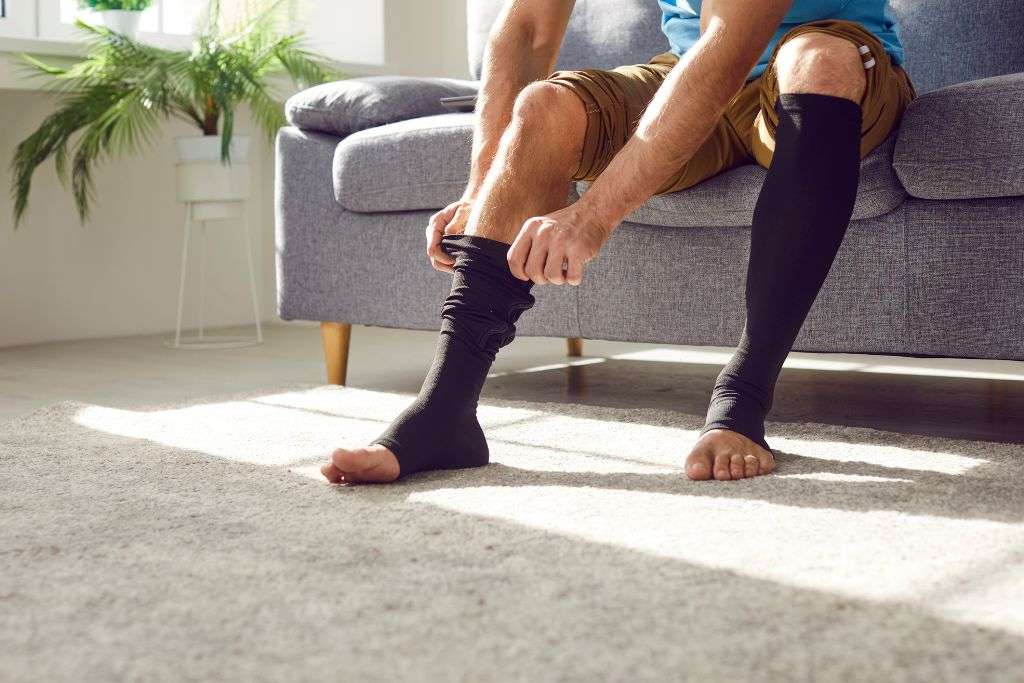
Aug 18,2025
Compression stockings have benefited a diverse group of people, ranging from athletes aiming to boost their performance to individuals dealing with poor circulation or swollen feet. These snug garments are engineered to deliver graduated compression, which applies targeted pressure to the legs and feet to enhance blood flow and alleviate discomfort.
Compression stockings offer many benefits. But, it is key to be aware of their potential side effects. This will help you make informed decisions about their use. This article explores the surprising side effects of compression stockings. It also gives insights into choosing the right ones for your needs.
Before we delve into the side effects, let's touch on the many advantages of compression stockings. These specialized garments offer several benefits, such as:
Compression stockings can boost blood flow. They stop blood from pooling and cut the risk of blood clots.
Reduced swelling: Compression socks help people with swollen feet or legs. They reduce fluid retention and promote drainage.
Compression socks can boost athletic performance. Athletes and runners use them to improve muscle oxygenation and reduce muscle vibration. They may help performance and recovery.
Pain relief: Compression stockings can help alleviate discomfort associated with varicose veins, edema, and plantar fasciitis.
Compression stockings are generally safe. But, there are some side effects that you need to be aware of:
Tight stockings or those made from irritating materials can irritate the skin. This can cause redness or even allergic reactions. Choosing good compression socks is crucial. They should be made from hypoallergenic materials and fit well.
Improperly fitted compression stockings can create pressure imbalances, causing discomfort or exacerbating existing circulation problems. You must consult a healthcare professional or a certified fitter. This will ensure you get the right level of compression and size.
Compression stockings can be hard to put on and remove, especially for individuals with limited mobility or dexterity. This can cause frustration and discourage consistent use, hindering the desired therapeutic effects. Consider using specialized tools like stocking aids or seeking assistance when needed.
Too much compression or wearing compression socks for a long time can reduce sensation or numb the feet. This side effect is concerning for athletes. They need to be alert and responsive during physical activities.
Compression stockings can provide relief and support. But relying on them too much without addressing the underlying issues or engaging in regular exercise can lead to weak muscles. It's essential to balance utilizing compression stockings and maintaining muscle strength through targeted exercises.
To minimize side effects and maximize the benefits of compression stockings, choosing the right pair for your specific needs is crucial. Consider the following factors when selecting compression socks:
Compression Level: Different compression levels cater to varying needs. Mild compression is enough for those with mild swelling or seeking prevention. But those with severe edema or chronic venous insufficiency may need moderate to firm compression. Consult a doctor to determine the appropriate compression level for your condition.
Size and Fit: Compression stockings should fit snugly but not excessively tight. Measure your legs carefully and follow the sizing chart provided by the manufacturer. Ill-fitting stockings can cause discomfort and increase the risk of side effects.
Material: Choose compression stockings made from breathable, moisture-wicking materials. They boost comfort and cut the risk of skin irritation or allergies.
Look for compression stockings with graduated compression. They exert more pressure at the ankle and decrease towards the top. This design promotes better blood flow and minimizes potential pressure imbalances.
Compression stockings offer numerous benefits for athletes, individuals with circulation issues, and those with swelling or pain. They are generally safe. But be aware of potential side effects. These include skin irritation, pressure imbalances, and reduced sensation. Choose suitable compression stockings. Ensure a proper fit. Follow healthcare professionals' guidance. This way, you can experience the benefits while minimizing the risk of side effects. Compression stockings should always be used with proper medical advice and lifestyle modifications for optimal results.
Q1: Are compression stockings only for athletes and runners?
No, compression stockings help many people. This includes those with circulation issues, swollen feet, and those seeking pain relief.
Q2: How long should I wear compression stockings?
The wear duration depends on your needs and your healthcare professional's advice. They may recommend wearing them throughout the day or only during particular activities.
Q3: Can I sleep with compression stockings on?
It's generally not recommended to wear compression stockings while sleeping. Only do so if a healthcare professional advises it.
Q4: Can compression stockings be worn during air travel?
Doctors often recommend compression stockings for long flights. They cut the risk of blood clots and leg swelling. Consult with your healthcare professional for personalized advice.